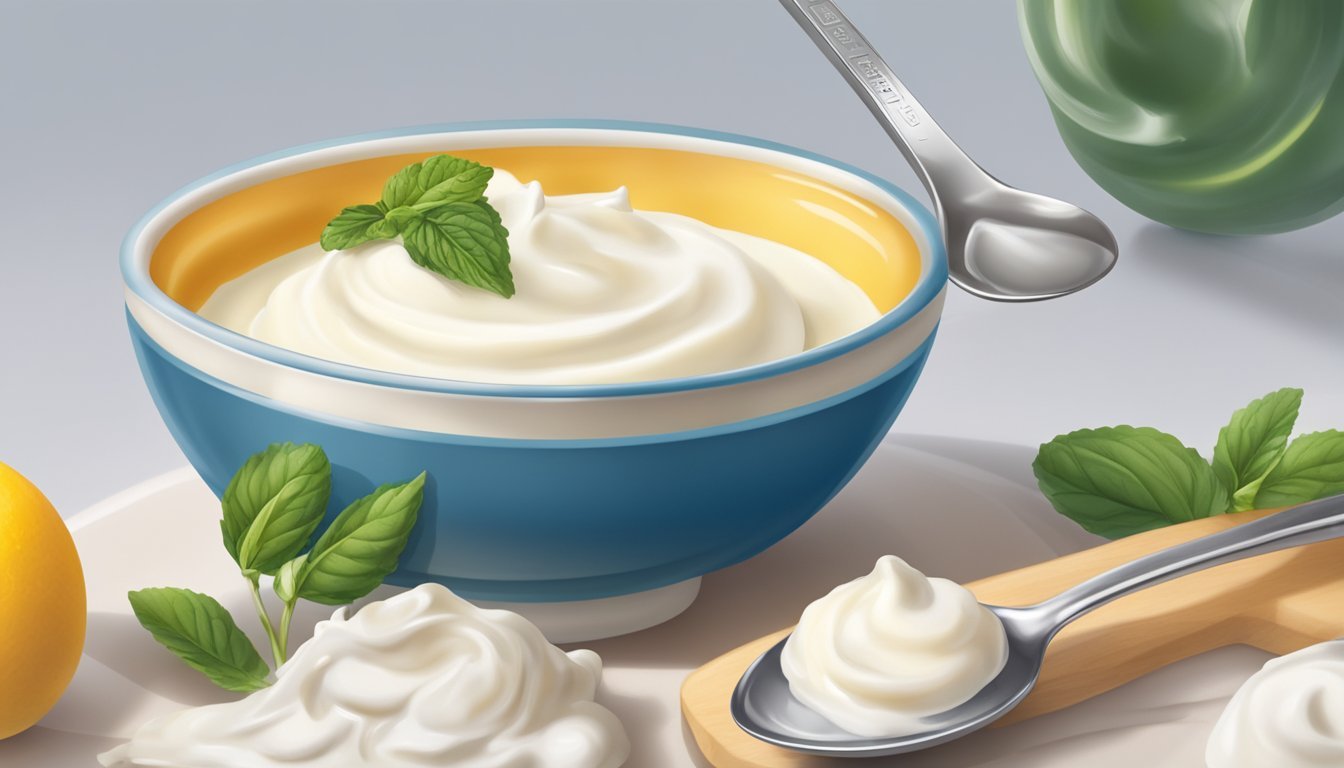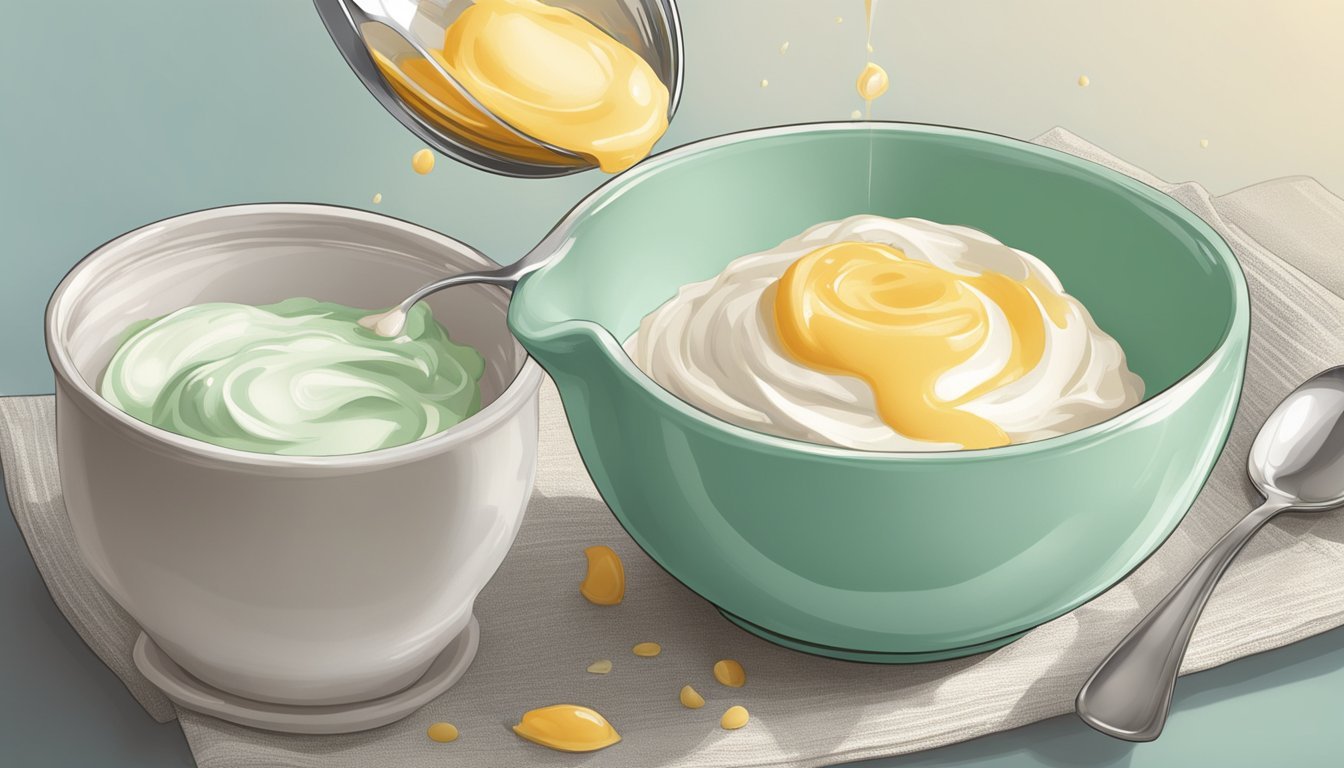How to Substitute Crème Fraîche for Sour Cream
Simple Swaps for Recipes
Crème fraîche is a cultured cream (how long does cream last?) that originated in France and is prized for its rich, velvety texture and slightly tangy flavor profile. However, it's not always readily available in grocery stores, and some may seek a sour cream substitute due to dietary preferences or for a recipe that calls specifically for sour cream. The good news is that sour cream is often used interchangeably with crème fraîche in various recipes because they share similar characteristics.
One key consideration when substituting crème fraîche for sour cream is the fat content. Crème fraîche typically has a higher fat content, around 30-45%, which makes it less prone to curdling when exposed to high heat. This makes it suitable for stovetop cooking and baking. In contrast, sour cream usually contains less fat and can sometimes separate or curdle if heated too quickly.
When looking for a substitute, the goal is to match the creaminess and slight tang that sour cream provides. There are several options to consider, including mascarpone, which is sweeter and can be used in a 1:1 ratio, particularly in desserts. Another substitute that offers a similar consistency is full-fat Greek yogurt, though it isn't as rich, and might require some adjustments to capture the desired richness in certain dishes.
Understanding Sour Cream and Crème Fraîche
Sour cream and crème fraîche are both fermented dairy products enriched by lactic acid bacteria, but they differ significantly in fat content, tanginess, and culinary uses.
Characteristics of Sour Cream
Sour cream is a popular dairy product known for its tangy flavor and creamy texture. It is made by fermenting regular cream with lactic acid bacteria, which imparts the characteristic sour taste. The consistency of sour cream is thick and spreadable, making it suitable for toppings and as an ingredient in numerous recipes. Commercially available sour cream typically contains about 18-20% fat and may include stabilizers, such as gelatin, to maintain its texture.
Texture: Thick and spreadable
Taste: Tangy
Fat content: Approximately 18-20%
Uses: Toppings, baking, sauces
Characteristics of Crème Fraîche
Crème fraîche, a staple in French cuisine, is a cultured cream that is similarly fermented with lactic acid bacteria. However, it boasts a higher fat content than sour cream, at around 30-40%, which results in a richer, less tangy flavor profile. This elevated fat content gives crème fraîche a luxurious silky mouthfeel and greater resilience to curdling when heated, making it preferable in hot sauces or soups.
Texture: Silky and smooth
Taste: Richer and less tangy than sour cream
Fat content: Approximately 30-40%
Uses: Hot dishes, desserts
Nutritional Comparison
In terms of nutrition, there's a notable difference between sour cream and crème fraîche, primarily due to their fat contents. Sour cream may offer a lower calorie option compared to crème fraîche, with light and nonfat versions available for those seeking to reduce their intake of fats. In contrast, crème fraîche's higher fat content can provide a more indulgent texture and flavor, though it comes with increased caloric density.
Nutrient Sour Cream (Regular) Crème Fraîche Calories Lower Higher Fat Content 18-20% 30-40% Texture Tangy and thick Silky and smooth Culinary Uses Versatile for various dishes Ideal for heat application
Both sour cream and crème fraîche may serve as successful substitutes for each other in recipes, keeping in mind the differences in fat content and tanginess.
Substituting Crème Fraîche in Recipes
When replacing sour cream with crème fraîche in recipes, one should pay attention to the cream's richer texture and less tangy flavor to accurately adjust the dish's final profile.
General Guidelines for Substitution
Ratio: The best ratio for substitution is a 1:1 direct exchange, meaning if a recipe calls for a cup of sour cream, one can use a cup of crème fraîche.
Temperature: Crème fraîche offers superior heat stability, making it less prone to curdling when heated, which is advantageous for hot applications like sauces or soups.
Adjustments for Cooking and Baking
Cooking: In heated dishes, crème fraîche imparts a creamy texture without the risk of separating. It's excellent in recipes where a smooth, enriched consistency is desired.
Baking: For baked goods, crème fraîche can contribute to a richer result. However, adjustments may need to be made for the additional fat content when compared to sour cream.
Specific Recipe Considerations
Sauces and Soups: Crème fraîche blends smoothly into sauces and soups, offering a velvety texture and a subtle tartness.
Dips: When using crème fraîche as a substitute in dips, one may need to balance the flavor profile with a slight increase in acidic ingredients to mimic the tanginess of sour cream.
Baked Goods: In baked goods, the substitution may affect the rise and texture, necessitating minor tweaks to the original recipe to maintain the intended outcome.
Alternative Dairy and Non-Dairy Substitutes
When seeking to replace crème fraîche, understanding the textural and flavor profiles of alternative products is crucial for a successful substitution, whether using dairy or opting for vegan and dairy-free options.
Yogurt as a Substitute
Yogurt can serve as an effective substitute for crème fraîche in many recipes. Full-fat Greek yogurt is especially useful due to its thickness and rich taste. To maintain the balance of flavors, one may utilize full-fat Greek yogurt in a 1:1 ratio. It's important to note, however, that yogurt is generally tangier and less creamy compared to crème fraîche, which may slightly alter the dish's final flavor.
Using Heavy Cream and Buttermilk
For those looking to recreate the richness of crème fraîche, combining heavy cream and buttermilk is an option. Simply mix two parts of heavy cream with one part of buttermilk and allow it to sit at room temperature until thickened. This combination leverages the natural bacteria in buttermilk to thicken the cream, producing a texture and tanginess reminiscent of crème fraîche.
Vegan and Dairy-Free Alternatives
Vegan and dairy-free alternatives typically involve plant-based ingredients. Coconut cream, derived from coconut milk, offers a rich and creamy consistency suitable for many recipes. For those preferring soy, soy-based sour cream substitutes exist and can be used in similar quantities to crème fraîche. These non-dairy options vary in flavor and may impart a distinct taste different from traditional crème fraîche, so they should be chosen based on one's taste preference and the recipe's requirements.
Practical Tips and Tricks
In substituting crème fraîche for sour cream, one must pay attention to ratios, acidity, and texture. Homemade sour cream requires precision and an understanding of acid-producing bacteria to achieve the desired flavor profile.
Ideal Ratios and Blending Techniques
When substituting crème fraîche for sour cream, use a 1:1 ratio to maintain consistency in recipes. To evenly blend crème fraîche into dishes, one should ensure that it is at room temperature before mixing. This will prevent it from curdling and ensure a smooth texture.
In baking: Use equal parts crème fraîche in place of sour cream.
For sauces: Whisk the crème fraîche until smooth before adding.
Understanding Acidity and Texture
The acidity of a sour cream substitute can affect both the flavor and the texture of the final dish. Crème fraîche has a milder acidity compared to sour cream, so consider adding a small amount of lemon juice or apple cider vinegar to mimic the tanginess if desired.
For more tang: Add 1 teaspoon lemon juice or apple cider vinegar per cup of crème fraîche.
For texture: If a thicker consistency is needed, one can strain the crème fraîche through cheesecloth to remove excess moisture.
Homemade Sour Cream Techniques
To create homemade sour cream, one can blend heavy cream with acid-producing bacteria such as kefir or a small amount of buttermilk. Allow the mixture to sit at room temperature for 24 hours until thickened.
Ingredients:
2 cups of heavy cream
2 tablespoons of kefir or buttermilk
Method:
Combine ingredients in a jar.
Partially cover and let sit at room temperature.
Wait for 10 to 24 hours, depending on desired thickness.
Using these tips and tricks, enthusiasts can successfully substitute crème fraîche for sour cream in their recipes while maintaining the richness and tang expected of dishes that traditionally include sour cream.
Health Considerations When Substituting
When substituting crème fraîche for sour cream, one must consider the health implications, including the differences in calorie and fat content, the potential issues for those with lactose intolerance or dairy sensitivity, and the balance between protein intake and sugar content.
Caloric and Fat Content Comparison
Crème fraîche and sour cream differ significantly in their fat and calorie content.
Crème fraîche: typically contains 30-45% fat, which may lead to a higher calorie count.
Sour cream: has a lower fat content, generally around 20%, making it less calorically dense.
For those seeking a healthier option with reduced fat, full-fat Greek yogurt could serve as a substitute, offering fewer calories and a similar texture to sour cream.
Lactose Intolerance and Dairy Sensitivity
Both crème fraîche and sour cream are dairy-based products and contain lactose, which can be problematic for those who are lactose-intolerant. Individuals with dairy sensitivity should consider lactose-free alternatives such as:
Coconut cream: suitable for those avoiding dairy, lending a similar creamy texture without lactose.
Cashew cream: another dairy-free option that can mimic the creaminess of sour cream for those sensitive to lactose.
Incorporating Protein and Reducing Sugar
While sugary substitutes may disrupt a balanced diet, it's important to select substitutes that maintain nutritional value.
Full-fat Greek yogurt: stands out as a substitute that offers substantial protein while typically containing less sugar than crème fraîche, beneficial for diet balance.
A substitute should not only be chosen to tenderize or add moisture but also to contribute protein without excessive sugar.
When replicating the creaminess of crème fraîche, consider these health factors to tailor your choice to your dietary requirements.
Culinary Uses Beyond Sour Cream
When substituting crème fraîche for sour cream, chefs can harness its creamy, tangy flavors to elevate familiar toppings, dressings, and dips. Its cultured cream base provides a distinct texture and richness to various dishes.
Topping and Garnish Ideas
Crème fraîche serves as an excellent topping on soups and stews due to its ability to add a creamy contrast without curdling under heat. It also shines as a garnish over baked potatoes or roasted vegetables, where its tangy flavor complements the natural sweetness of the ingredients.
Soups: Dollop on chilis or pureed soups.
Potatoes: Substitute for sour cream on baked or mashed potatoes.
Vegetables: Drizzle over roasted or grilled veggies.
Creating Richer Salad Dressings
The texture of crème fraîche lends itself to creating richer, more luxurious salad dressings. It can be whisked into vinaigrettes for added body or used as a base for creamy dressings where one might typically use mayonnaise or sour cream.
Classic Caesar: Substitute part of the mayonnaise with crème fraîche.
Ranch Dressing: Mix with herbs for a thicker, richer ranch.
Innovative Dips and Condiments
As a condiment, crème fraîche can serve as a sophisticated alternative to mayonnaise in aiolis, or it can be the main ingredient in a creamy dip, enhancing the overall mouthfeel with its cultured, full-bodied profile. When mixed with herbs and spices, it infuses dips with a complex, tangy flavor signature to cultured creams like Mexican crema.
Herbed Crème Fraîche Dip: Combine with dill (how long does dill last?), garlic, and lemon juice.
Spicy Aioli: Use crème fraîche as a base, add garlic, and a touch of hot sauce.





